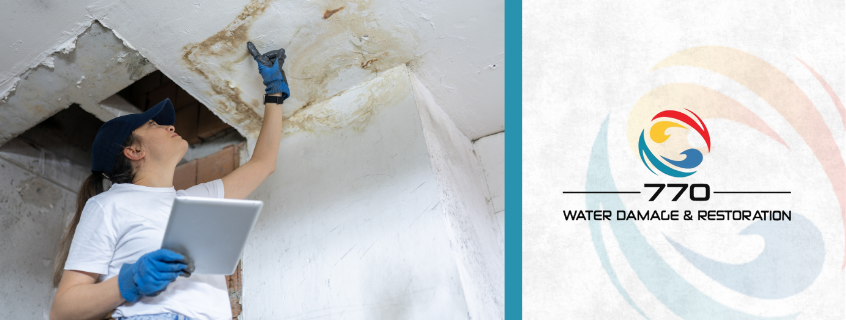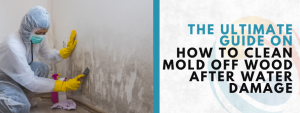
Have you ever walked into your home and instantly felt stuffy, itchy, or tired, even though you felt fine just a moment ago? It’s easy to shrug it off as stress, allergies, or a change in weather. But sometimes, it’s something much more hidden… something lurking silently behind your walls.
Mold can live and grow quietly in places you never see—behind drywall, beneath flooring, around windows, and inside air ducts. While it might stay out of sight, it won’t stay out of your system. If you or your family start experiencing strange symptoms only while at home, these could be mold allergy home symptoms.
Let’s uncover the signs together—so you can take action before mold takes over.
Nonstop Sneezing Indoors
You know the sneeze—the kind that comes in threes or fours and leaves you grabbing for tissues. If this keeps happening only at home, it might be more than just dust.
Mold spores are tiny and light, floating through the air without being seen. When inhaled, your body may react by sneezing to try and clear them out.
Some warning signs:
- Sneezing increases near vents, basements, or bathrooms.
- You feel fine when outdoors, but congested indoors.
- You’ve ruled out pets, pollen, or perfumes.
Sneezing is one of the first mold allergy home symptoms that appear, yet it’s often blamed on seasonal allergies.
Itchy, Watery Eyes That Flare Up at Home
Itchy or watery eyes may seem like a normal reaction to tiredness or screens, but if the irritation hits the moment you walk through your front door, mold could be the reason.
Mold spores act like allergens, causing eye inflammation and irritation. Children, elderly people, and anyone with sensitive eyes might notice this sooner than others.
Keep an eye out for:
- Watery or bloodshot eyes only when inside.
- Blurry vision after being home for a while.
- Eye discomfort that disappears after a few hours away.
Mold allergy home symptoms like this are subtle but powerful and often overlooked.
Persistent Dry Cough or Throat Irritation
A tickle in your throat that turns into a never-ending cough? Mold exposure may be behind it.
Mold particles in the air can irritate your respiratory system, especially if you have asthma or allergies. This kind of cough is often dry and doesn’t go away with tea or lozenges.
Watch for these patterns:
- Coughing more at night or after turning on the HVAC.
- Throat dryness that returns every evening.
- A cough that lingers for weeks without other signs.
A dry, nagging cough indoors is one of the clearest mold allergy home symptoms. To dig deeper, consider getting an indoor air quality test or mold inspection.
Headaches That Come and Go Based on Location
You might not associate headaches with your walls, but mold releases volatile organic compounds (VOCs) as it grows. These can trigger headaches, especially in closed or damp spaces.
You may notice:
- Headaches start after spending time in the basement or bathroom.
- Feeling better after stepping outside for fresh air.
- A dull ache that reappears in certain parts of the house.
Mold-related headaches are among the lesser-known mold allergy home symptoms, but they can make everyday living feel miserable. If it happens regularly, it’s time to take a closer look at your home’s hidden areas.
Need help identifying possible mold-prone areas and cleanup solutions? Explore this professional restoration guide for answers on what steps to take next.
Skin Rashes or Redness Without a Clear Cause
Skin issues can be tricky. Maybe you’ve changed your detergent, tried new lotions, or cleaned up your diet. But if you’re still seeing random rashes or itchy patches, mold could be involved.
When mold touches your skin or floats in the air, it can trigger reactions in people with sensitive immune systems.
Look out for:
- Patches of redness on arms, legs, or back.
- Hives or bumps that appear after lying on the couch or carpet.
- Skin irritation that calms down after leaving home.
Among the many mold allergy home symptoms, skin irritation is often misdiagnosed, especially when no new products are involved.
Brain Fog or Trouble Focusing at Home
Ever feel like your mind is cloudy at home, but sharp everywhere else? Mold could be affecting your mental clarity.
Certain types of mold release mycotoxins, which may interfere with brain function and cause cognitive symptoms in sensitive individuals.
Common signs include:
- Difficulty focusing while working from home.
- Forgetfulness or low motivation that occurs outside the house.
- Feeling mentally slow or “foggy” during specific times of day.
While it might sound surprising, neurological symptoms are increasingly being recognized as part of mold allergy home symptoms. If your thoughts become clearer when you’re away, listen to your body.
Curious about where mold could be hiding and what solutions exist? Visit this trusted guide to learn how indoor moisture affects health—and how to tackle it.
Ongoing Fatigue That Doesn’t Improve
You sleep well, eat fine, and take care of yourself, but still wake up feeling like you ran a marathon. Sound familiar?
When your body constantly battles airborne mold, it uses energy to fight inflammation. This drains your system and leads to persistent fatigue.
Here’s how mold-triggered fatigue usually shows up:
- Feeling worn out, no matter how early you go to bed.
- I need naps or extra coffee just to stay awake at home.
- Symptoms improve while on vacation or at work.
Mold allergy home symptoms like fatigue are often dismissed or blamed on stress, but when your energy drops only while at home, it’s time to consider environmental factors.
Mold vs. Other Causes: Know the Difference
Here’s a helpful table to distinguish between mold-related symptoms and other causes:
| Symptom | Mold Likely? | Common Mold Source | Not Mold If… |
| Sneezing | ✅ Yes | HVAC, walls, hidden leaks | Happens outdoors too |
| Itchy eyes | ✅ Yes | Airborne spores | You have a pet allergy |
| Cough | ✅ Yes | Shower tiles, ducts | You’re also feverish |
| Headaches | ✅ Yes | Basement, corners, closets | Related to screen time only |
| Rashes | ✅ Yes | Carpets, upholstery, air | Comes from the new detergent |
| Brain fog | ✅ Yes | Enclosed, damp areas | You’re sleep-deprived or stressed |
| Fatigue | ✅ Yes | Any room with high humidity | You’re overworked or recovering from the flu |
Where Mold Loves to Hide: Check These Spots
Even if your walls and ceilings look clean, mold can still thrive where moisture builds up. Use this checklist to spot potential mold hotspots:
- Behind bathroom tiles
- Inside HVAC ducts
- Under sink cabinets
- Beneath carpets or rugs
- Around windows and frames
- Inside walls after leaks or floods
Mold grows best in warm, dark, and damp places—so always pay attention after water damage, no matter how minor it seems.
Have you had a past plumbing leak, flood, or musty smell near drywall? These are strong clues. For help assessing and fixing mold-related damage, learn more about professional solutions in this local resource.
Final Word: Don’t Ignore the Signs
Mold doesn’t always announce itself with black spots or peeling paint. Often, your body knows before your eyes do. Whether it’s sneezing, coughing, or unexplained fatigue, if it happens mostly at home, it might be time to investigate.
Mold allergy home symptoms are more than a nuisance—they’re your warning system. Don’t wait for bigger health problems or structural damage. Trust your instincts, look behind the walls, and take action today.
If you need expert support to inspect or repair your space, the right help is just a click away.
Sure! Here’s a clear, user-focused FAQ section titled appropriately and tailored to your blog. Each question uses personal language, is arranged by frequency, and includes concise two-sentence answers.
Frequently Asked Questions About Mold Allergy Home Symptoms
How do I know if my symptoms are caused by mold in my home?
If you feel worse at home and better when you’re away, mold could be the issue. Common mold allergy home symptoms include sneezing, itchy eyes, fatigue, and brain fog that only happen indoors.
Where is mold most likely hiding in my house?
Mold often hides in damp, dark places like behind drywall, under carpets, in HVAC systems, and around windows. You may not see it, but musty smells or water stains are strong clues.
Can mold cause long-term health problems for me or my family?
Yes, prolonged mold exposure can lead to respiratory issues, chronic fatigue, and worsened allergy or asthma symptoms. It’s important to address mold early to prevent long-term effects.
What should I do if I suspect mold in my home?
Start by checking common problem areas and monitoring symptoms. If you’re unsure, contact a mold remediation expert for a full inspection and cleanup plan.
Is it safe for me to stay in my home if I think there’s mold?
If symptoms are severe or involve children or elderly family members, it’s best to minimize time in the affected areas. Ventilate the home and seek professional help to confirm and remove mold safely.





